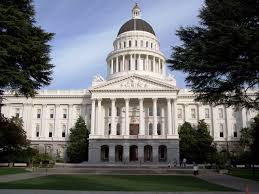The latest economic treat, the budget deficit fell to just 4.1% of GDP in 2013, the lowest level since 2008. Revenues were 16.7% of GDP, while expenditures were 20.8%. Rising revenues accounted for 79% of the deficit decline in 2013. The trick will be getting the annual deficit below 2.5% of GDP. As long as it’s above that level, the debt will continue to rise as a percentage of GDP.
Tag Archives: graphsandlaughs and economics
Fed Faces
In addition to nominating Janet Yellen to be Chairwoman of the Fed, President Obama will soon nominate three, and possibly four, new people to soon-to-be vacant slots on the seven-member Federal Reserve Board of Governors, all of whom vote on interest rate matters. Among the nominees, expect at least one Republican, one woman, and one with extensive regulatory knowledge given the Fed’s growing role in bank supervision due to Dodd-Frank.
Quantitative Easing
QE is not “printing money” as it does not increase the amount of money in circulation. Handing out $100 bills would be printing money. By purchasing Treasuries and MBS, the Fed raises the price of those securities and thus lowers interest rates. And lower rates can certainly result in an increased desire to borrow. But that increased demand will only lead to money supply growth if private banks make loans.
Jobless Recoveries
In recessions between 1950 and 1982, GDP always fell by more than employment, and as a result productivity per worker declined. Starting with the 1990-91 recession, things reversed. In that recession, GDP declined 1.2% yet employment fell by 1.7%. In the 2001 recession, GDP fell by 0.3% while employment fell by 1.2%, and in the Great Recession, GDP fell 4.7% while employment fell 6.3%, resulting in rising productivity during recessions.
Horsing Around
The Friday File: The highest-priced stallion syndication was for Fusaichi Pegasus at a reported $60 million in 2000, while the record stud fee remains $500,000 for Northern Dancer in the mid-1980’s. The most paid for a thoroughbred at auction was $16 million in 2006 for two year-old The Green Monkey (who retired from racing after going 0-3), bettering the previous record of $13.1 million for Seattle Dancer in 1985.
Weak Work
The 148,000 new jobs reported in the delayed September employment report are profoundly disappointing. New jobs have now averaged 143,000 this past quarter, 182,000 in Q2 and 207,000 in Q1. At the current rate, it will take until September 2014, or 68 months, to bring the total employment level back to where it was in January 2008, prior to the onset of the Great Recession. Talk about a jobless recovery!
Moving Money
The velocity of money is the number of times a unit of currency is used to buy domestically produced goods and services during a fixed period of time. The velocity of M1 (cash and checking accounts) has fallen by 38% since the start of the Great Recession, while M2 (M1 plus savings accounts, CDs and money market accounts) has declined by 19%. Note, QE has not substantially altered these numbers.
Deficient Data
The CPI is based on 83,300 price quotes/month, but because the government was closed for 11 working days in October, the sample will be based on 40,000 price quotes. Because price quotes for some items are collected bi-annually, it will take six months for inflation data to fully recover from the small October sample. Worse, estimates for GDP, productivity and consumption which are based on CPI, will be similarly harmed.
Representative Salaries
The Friday file: Legislators in CA are paid best at $90,000/year, with PA second at about $83,000/year. NY is third at $79,000, followed by MI and IL at about $70,000/year. By contrast, NM pays legislators nothing, NH pays them $100/year, AL $1,000/year and MT $3,700/year. With 120 legislators for 38 million people, lawmakers in CA represent on average 315,000 constituents. In NH, each of the 424 lawmakers represents 3,100 constituents.
Insanity Defined
After reducing Q4 GDP by 0.5% or $20 billion and achieving no meaningful policy changes by forcing a government shutdown, Congress now promises to reward us with potentially more of the same in early Q1 2014! While this will hurt consumer confidence and slow our recovery, it’s a boon for bond investors and emerging markets because with the Fed not tapering till 2014, interest rates will stay where they are.









